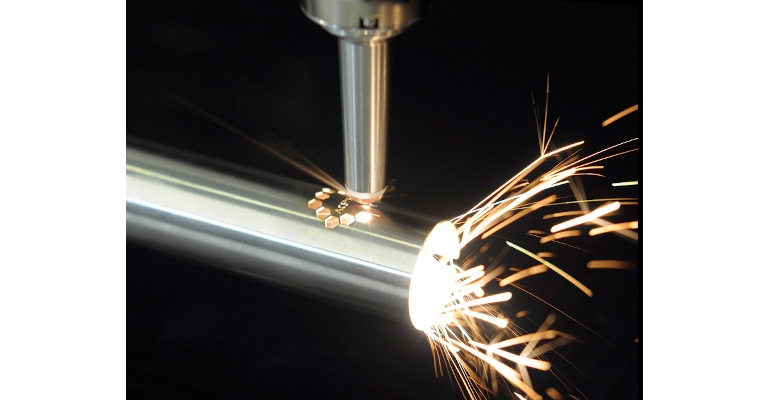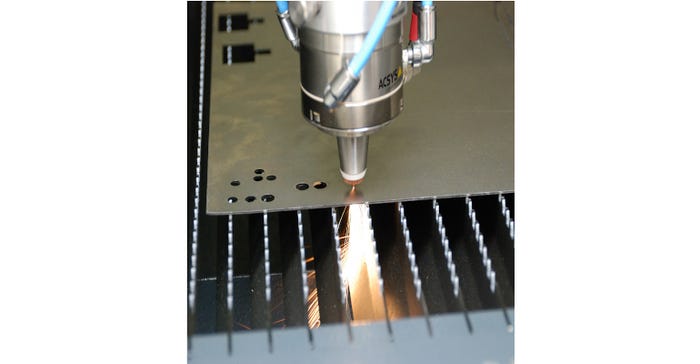Lasers have enabled new and improved medical product designs. What else is possible?

From cardiac rhythm management to neuromodulation to orthopedic and hearing implants, laser materials processing systems are playing pivotal roles in the production of these life-improving devices. These are some of the now-common applications of laser processing systems used in the manufacture of medical devices, and the application base is expanding rapidly. Even the basis for entirely new products has centered around the availability of laser machine systems technology.
Laser systems have always been important to the medical device industry. When first commercialized in the 1970s, lasers were embraced by the industry. They have evolved along with the products they are capable of making and have enabled new and improved medical product designs. For instance, we are now at the stage of using ultra-short-pulsed lasers that impart negligible heat input to machining operations on medical devices.
Read on for a look back at laser processing successes, and a look at what else is possible.
Laser Technologies Can Improve Quality of Life
In several critical categories, laser technologies make a difference. For example, cardiac rhythm management (CRM) aims to improve the quality of life for someone with a heart that often beats too slowly or misses beats. Several industrial laser processes are used to produce CRM devices, such as laser welding with pulsed fiber lasers to provide a hermetical seal on the pacemaker cartridge, wire stripping of electrodes used for the device with q-switched and short pulsed lasers, and laser marking of UDI codes onto the device with fiber laser markers. Pacemakers have heat-sensitive electronics in their assembly, and this was one of the reasons why laser systems were deployed in their manufacture originally as the net-heat transfer is negligible or manageable with appropriately engineered laser systems.
Lasers also lend themselves to automation, such as their integration into a glovebox welding system to prevent oxidation of the welded pacemakers. Before the advent of fiber laser technology in the medical device industry in the mid 2000s, these devices were manufactured using legacy solid-state rod-based lasers from the late ‘80s and early ‘90s.
Evolution of Laser Technologies for Medical Devices
Neuromodulation using medical devices is increasingly being used to control the effects of conditions such as Parkinson’s disease and Benign Essential Tremor. These revolutionary devices can be implanted into the brain tissue or spinal cord to improve motor coordination. The electrodes are made from relatively inert metals that are coated with plastics. To reveal the electrodes, which are subsequently embedded in the body, the delicate wires made from materials such as platinum and copper are laser wire stripped of their fluoropolymer jackets, often PTFE, and other polymers such as PET or polyimide.
The laser systems used for such processing are diverse in terms of the edge quality required and the desired effect on the bare metal. The great advantage of laser systems in these processes is how well they can be integrated into turnkey automated systems for manufacturing, and the fact that they do not touch or impart much mechanical force onto wires that can have a diameter down to one thousandth of an inch. Such laser processing can replace laborious manual processes performed under a microscope. It is often the case that laser is the best method available to the medical device manufacturer, and this is often why the medtech engineering staff will naturally look to a laser system as their first production idea when developing innovative new products.
Orthopedic implants have for many years been laser marked and engraved, and some devices are laser welded and laser 3D printed from metal powders. The complete laser generation of ortho implants has led to mass customization using data generated from MRI scans. Laser systems are even able to polish selective areas of the metal implants made from materials such that they have a lower surface roughness than the original 5-axis CNC machined surface. Conversely, laser machining systems can structure ortho implants to provide surfaces for cell adhesion. Diverse functional surface properties can be produced on the same part.
The use of laser-based manufacturing is extensive in the ortho sector, and coupled with order data handling interfaces, form an integrated laser system that is directly linked back to the product ordering and verification system. This provides traceability and quality checks for each part, and a log of everything that took place during that laser materials processing operation, eliminating risk and supporting the manufacturer’s ability to gain speedy regulatory compliance.

The instrumentation used in ortho implants is also heavily reliant on laser processing, across laser cutting of bone saws, welding of saw cartridges and marking graduated scales for surgical cutting depth.
Vision systems, such as smart cameras with attendant software, are widely integrated into laser systems to provide the necessary checks during processing to ensure a perfect product. Many of the processes used in the ortho business are fiber laser based, yet CO2 and older technologies still exist. Medical device manufacturers tend to seek out the forward-looking technologies to give them competitive advantages and to improve regulatory compliance on production methods.
An analogous laser structuring technology is used on much smaller cochlear implants for improving deafness. Laser systems can usually be matched to the scale and production volume of the product with a fast ROI.
There are many other processes not discussed here, from micro-fluidic assay diagnostic device machining to engraving and structuring of ceramics and glasses used in medical devices to cutting of metals and plastics for stents, hypotubes, surgical blades, to plastics welding. These have all now become popular among large medical device manufacturers and their contractors.
Future Advances
Since their inception, laser systems have been a major contributor to the successful creation of all types and sizes of medical devices. From surgical to implanted devices, lasers can ensure that parts are identifiable, non-corrosive, and non-toxic. Thanks to their versatility and ability to process a wide range of materials, lasers can offer up even more cost-effective and innovative processes as medical technologies continue their rapid advance. These advances will offer benefits to design engineers as well as to healthcare professionals in bringing state-of-the-art opportunities to mitigate risks, ensure regulatory compliance, and elevate patient safety.
About the Author(s)
You May Also Like




